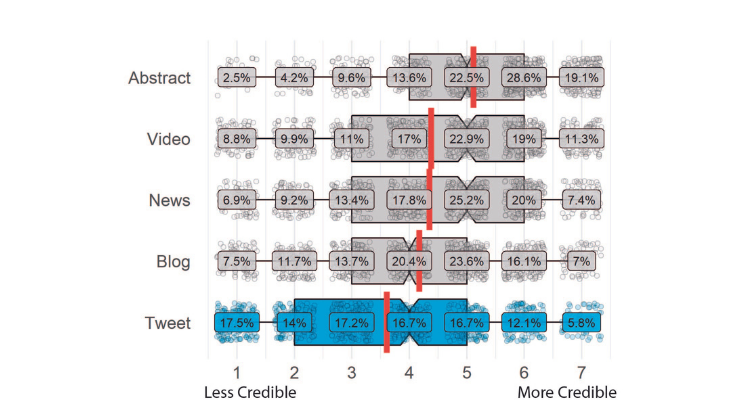For new readers and potential authors of academic journals, the title and aims and purposes of the publication provide important information as to what readers should expect within. However, the quality of this information can be varied. Using a dataset of journals from the field of business, management, and accounting research, Julián D. Cortés explores how this information varies across journal, prestige, geography and publication model, and suggests how those working on emerging journals can use this information to improve their presentation to external audiences.
Every now and then, publishers, editors, and research institutes review the names of their journals and their scope. In so doing, they assess how well they differentiate their content and brief their audience on what to expect from the publication. In other words, how they represent the journal’s mission statement.
In business and management, the mission statement is the most used strategic planning tool. They normally express at least four key concepts:
- Purpose, or why the organisation exists
- Values, or what it believes in
- Standards and behaviours, or the rules/norms that shape its operations, and
- Strategy, or the long-term planning and pathway for achieving its purpose
Similar key concepts are highlighted when identifying the positive features of credible journals. For instance, an intuitive website, a well-defined journal scope aligned with the journal’s title, articles content, and the expectation of professional readers.
Despite much research on mission statements and their relationship with organisational performance, research translated to scholarly communications and research evaluation on the structure of these journal mission statements is more limited. For this reason, I took a sample of over 1,500 journals in my own field (business, management, and accounting) to explore how they differ across journal models, open access/subscription and journals with different levels of prestige. You can read my full findings (open access), here, but several notable findings emerged from this study.
Titles and mission statements communicate interdisciplinary crossover as much as core themes
The median number of characters for journal titles was 35. Whilst short journal titles, such as 4OR, tended to be uninformative. Journals closer to the median number of characters, such as Journal of Accounting and Economics provided more helpful information for readers/authors. Journal titles and mission statements character length are not however correlated. Thus, short journal titles are not always accompanied by a larger mission statement, implying an unbalanced degree of information for readers and authors.
Figure 1 shows the semantic network of journal titles. Semantic networks enable us to analyse the structure of journal titles and mission statements. Surprisingly, key terms with a higher property of brokering the flow of information between communities of terms, namely betweenness, were not strictly from business and management, namely engineering (e.g., engineering design) or development (e.g., sustainable development). Therefore, such key terms owned a strategic position, namely betweenness, in the network over business and management’s own concepts (e.g., marketing and strategy).
For instance, the key-term of engineering in journal titles appeared along key-terms such as marine, nuclear, society or even architecture. Meanwhile, marketing was restricted to multidisciplinary although closely related topics such as psychology, fashion, even non-profit.
 Fig. 1 Journal titles semantic network. Source: Julián D. Cortés (2021) “Journal titles and mission statements – Lexical structure, diversity, and readability in business, management and accounting research”
Fig. 1 Journal titles semantic network. Source: Julián D. Cortés (2021) “Journal titles and mission statements – Lexical structure, diversity, and readability in business, management and accounting research”
Prestigious journals express broad reach, less prestigious highlight narrower concerns
I also contrasted the structure of the mission statements of the top and bottom ten per cent according to their SCImago Journal Rank (see below) a citation-based prestige indicator.
For both groups, the principal components for their mission statements were (1) what the journals seek in submitted manuscripts and (2) methodologies and practical applications. What distinguished prestigious journals was related to their social-environmental and geographical reach. For less prestigious journals it was more specific firms processes and results.
 JMS semantic network – Top ten per cent prestige
JMS semantic network – Top ten per cent prestige
1. What the journals seek in manuscripts, for instance, new/original.
2. Professional/practical applications/methods.
3. Social-environmental and geographical reach, namely ecosystems, socioeconomic, municipal, communities
 JMS semantic network – Bottom ten per cent prestige
JMS semantic network – Bottom ten per cent prestige
1. What the journals seek in manuscripts
2. Attributes/focus and methodological preferences for instance peer-reviewed and quantitative/philosophical/multidisciplinary
3. Private institutions processes/results for instance business, industry(ies), production/products/innovations and trade
By analysing individual words, in the top ten per cent mission statements the words with a higher betweenness were related to (1) a geographical scope, namely region, or national; and (2) critical type of scholarly communication, namely critical evaluation or critical management studies
For the bottom ten per cent mission statements, the key-terms were (1) year, meaning the journal’s coverage or timely contribution to the field; (2) interested, as in the interests of the journal regarding a manuscript attribute or the public interested. Also, it is crucial to notice that (3) indexing (i.e., Scopus) is an essential intermediate feature in the mission statements of the bottom ten per cent.
The mission statements of open access journals are more diverse, but prestigious journals are more readable
I also examined the readability level and lexical diversity of mission statements. A mission statement with higher readability means a text with clarity with few unnecessary complexities. Those with higher lexical diversity employs fewer repeated words.
Figures 2 and 3 present two world heat maps showing the median readability and diversity of the journal mission statements for 54 countries according to the country of publishers with available data. The yellow band expresses the lowest median score. In contrast, red is the highest median score.
Unsurprisingly, there is consistency in the readability of mission statements from countries such as England, the USA, or Canada. It was also evident for other countries such as Sweden, Italy, Pakistan, Iran, and Japan. On the other hand, Iberoamerican countries have the lowest readability.
 Fig. 2. World map – Median JMSs readability score according to the country of publishers Source: Julián D. Cortés (2021) “Journal titles and mission statements – Lexical structure, diversity, and readability in business, management and accounting research”
Fig. 2. World map – Median JMSs readability score according to the country of publishers Source: Julián D. Cortés (2021) “Journal titles and mission statements – Lexical structure, diversity, and readability in business, management and accounting research”
The USA and Canada are among the few countries with both higher readability and lexical diversity. Fewer mission statements from countries such as, Colombia, India, Finland, Pakistan, Thailand showed higher lexical diversity than English-speaking countries, such as Australia.
 Fig. 3 World map – Median JMSs lexical diversity score according to the country of publishers Source: Julián D. Cortés (2021) “Journal titles and mission statements – Lexical structure, diversity, and readability in business, management and accounting research”
Fig. 3 World map – Median JMSs lexical diversity score according to the country of publishers Source: Julián D. Cortés (2021) “Journal titles and mission statements – Lexical structure, diversity, and readability in business, management and accounting research”
In terms of lexical diversity differences between groups, such as open access vs non-open access, and four groups of prestige according to quartiles. In essence, there were no significant differences in the readability of the mission statements of open access and non-open access journals.
However, readability was significantly different and higher in the 2nd that 4th quartile (quartiles are inversed in the SCImago Journal Rank; 1st quartile as for the highest prestige). Also, lexical diversity was significantly different and higher in the 1st and 2nd quartile of prestige than in the 3rd and 4th quartile.
That could be partly explained by the necessity of reputable journals to convey higher amounts of information when communicating with their stakeholders and their scientific distinction.
Lessons for emerging journals
The distinctive characteristics of reputable journal mission statements, such as higher readability and lexical diversity and the social-environmental and geographical reach, could serve as a benchmark for emergent journals. There are free R packages (e.g., quanteda) to conduct these textual data analyses in research dependencies as part of their planning exercises. My study also provides an open access list of the journal mission statements which could be used by emergent journals staff (here).
The study also highlights the fairly narrow nature of journal mission statements, suggesting that side-lined, but important information, such as, how the journal plans to grow and maintain its relevance and sustainability; its main reason/purpose as philosophy, self-concept, and the public image that it is developing seeks to achieve in the future, could be better represented.
Integrating this information could enrich and provide more informative journal mission statements. As well as readers and authors journal mission statements also serve librarians, university administrators, audiences often neglected in this sample. More comprehensive mission statements could then target multiple stakeholders involved in the circulation of scholarly communication.
The content generated on this blog is for information purposes only. This Article gives the views and opinions of the authors and does not reflect the views and opinions of the Impact of Social Science blog (the blog), nor of the London School of Economics and Political Science. Please review our comments policy if you have any concerns on posting a comment below.
Image Credit: In text images reproduced with permission of the author, featured image Jonathan Greenaway via Unsplash.







